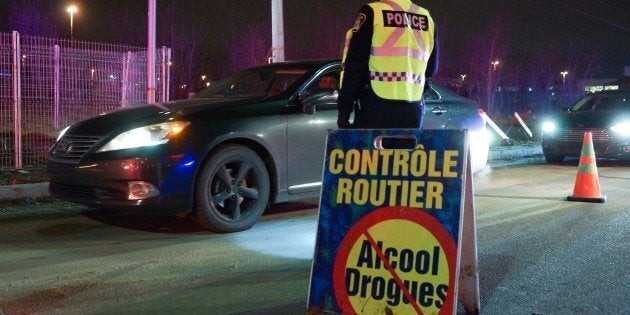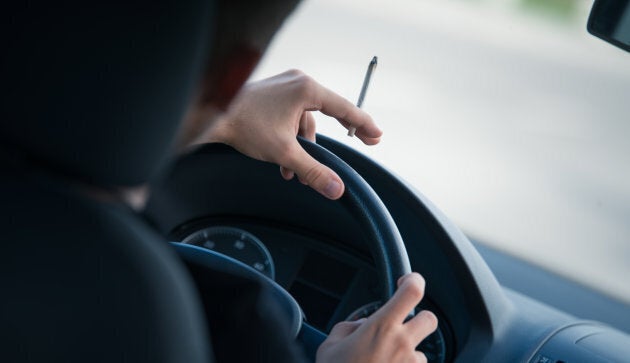
As cannabis moves closer to legalization, Canadians are asking themselves what it means for them. If the recent Toronto Star article is any indication, one area that's coming under greater scrutiny is the issue of drugged driving.
Unfortunately, there's nothing new about people choosing to get behind the wheel while under the influence of drugs or alcohol, and police forces across Canada already have processes in place to deal with that reality. What will change once Bill C-45 and its companion, Bill C-46 — which includes greater enforcement for drugged driving laws under the Criminal Code — are our social norms. Literally overnight, police will find themselves enforcing road safety laws in an environment where people can buy cannabis from a local store. It is expected that a greater number of people will be experimenting with, or perhaps even regularly consuming, cannabis.
The reality is that cannabis has been shown to impair driving performance for up to three hours after use.
Drinking and driving has long since entered mainstream discussion. Today, most people know when to stop themselves or others from making a terrible decision. It's become an accepted social norm. By contrast, given that one in four cannabis users in Canada reported having operated a vehicle while under the influence of the drug, it is likely fewer Canadians consider cannabis and driving in the same way, let alone how things will change under C-46, and the implications this may have for police and the public alike.
I come to this discussion with a unique perspective. I am part of a company that has been making roadside drug testing devices for over a decade that are used today by police around the world. These devices operate much like breathalyzers, except they require small amounts of saliva to determine the level of drugs in a person's system. They use saliva because it correlates most closely to blood concentrations, so they are only detecting recent usage.

Needless to say, as a manufacturer of drug and alcohol testing products, improving road safety is a frequent topic of conversation. But besides the obvious fact that no one should ever drive when impaired after consuming drugs or alcohol, it's important to understand what drugged driving really means, what tools police have at their disposal, and what Canadians who currently or plan to use cannabis must keep in mind whenever they get behind the wheel.
The complexity of cannabis
One issue facing police and governments is that cannabis is quite different from beer, wine or spirits. Alcohol behaves in a relatively predictable way in someone's body. Once someone stops drinking, the level of alcohol steadily decreases to a point where it is not present at all. Cannabis, on the other hand, stays in the body longer. This has raised concerns that people who have not consumed cannabis for an extended period could still be found to have it in their systems, as could people who use cannabis more frequently. There's also the matter of people who use cannabis for medicinal purposes. The reality is that cannabis has been shown to impair driving performance for up to three hours after use.
The purpose of roadside testing
Today, a roadside officer who suspects a driver of operating under the influence of drugs makes that determination by asking questions or conducting simple tests. But, ultimately, they must refer a driver to be assessed by a trained Drug Recognition Expert, or DRE. They conduct further tests and may require a blood sample, which is considered the gold standard in court cases.
While C-46 opens the door to the use of roadside saliva drug testing devices like ours, they are one more way for the police to add objective and credible evidence to their assessment. The combination of trained experts and blood samples remain core to the process.

Questions of accuracy
If and when drug testing devices do enter the equation here in Canada, some have raised the concern about the possibility of erroneous readings and that the technology around drug testing is still relatively young when compared to breathalyzers. Suffice to say that saliva-testing technology has been shown to be 95-per-cent accurate in scientific studies. But the point I'm making is that a saliva test, conducted by police at the roadside, is simply another tool that helps the police determine if the driver will be requested to provide a blood sample.
More blogs from HuffPost Canada:
The bottom line is that across Canada, drugs already play a role in an increasing proportion of fatal road traffic accidents. Road safety should be a priority for every Canadian and ensuring police have the resources they need to spot drug impaired drivers will help save lives.
Canadians should use the months leading up to legalization to better understand the rules and responsibilities proposed under Bill C-46 and, if they haven't already, to begin viewing roadside drug testing in much the same way they have come to view the roadside checkpoint and use of the breathalyzer — something we anticipate and accept to protect people on our roads.
Rob Clark is Managing Director at Draeger Canada
Also on HuffPost: